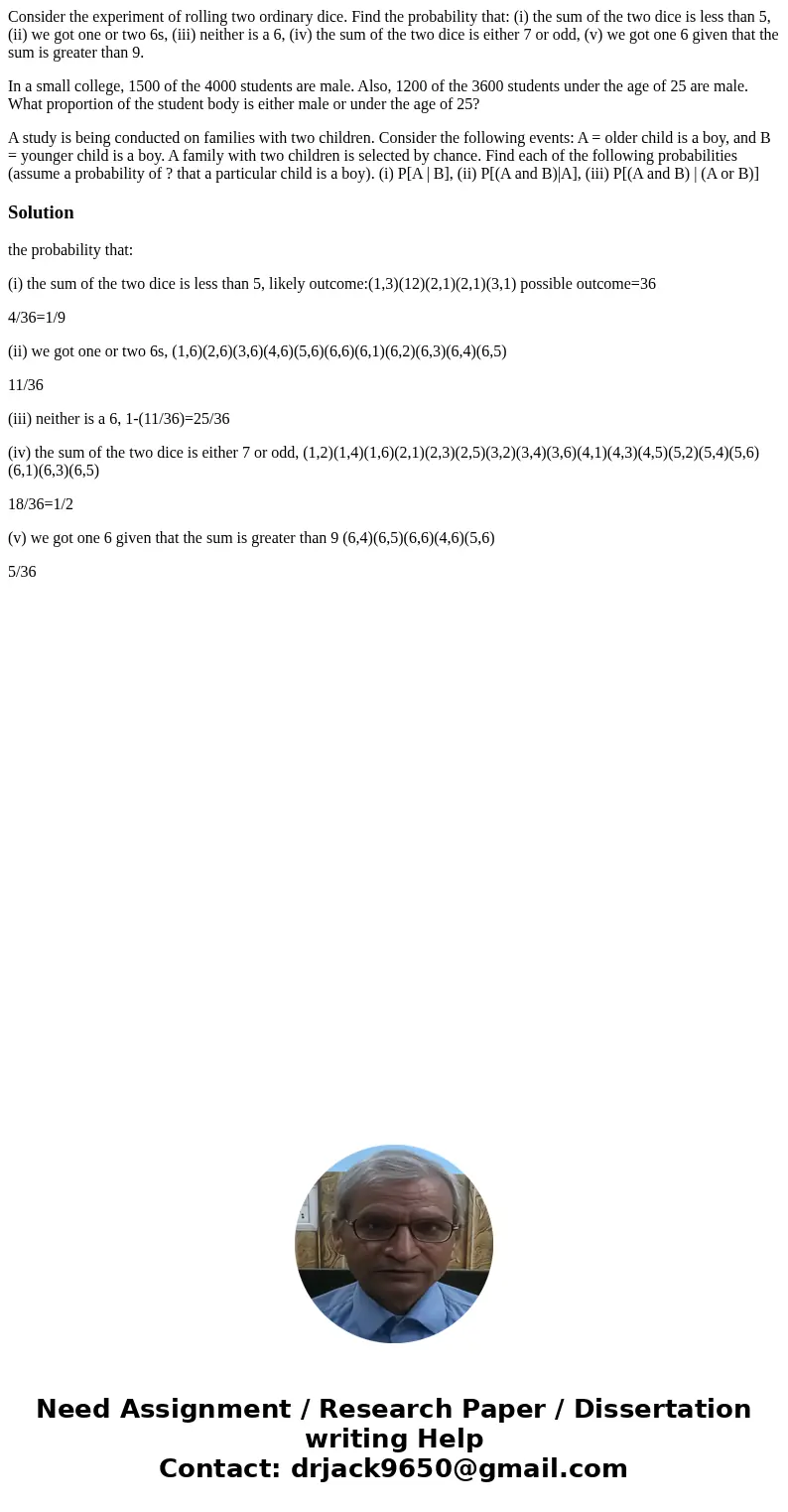Consider the experiment of rolling two ordinary dice Find th
Consider the experiment of rolling two ordinary dice. Find the probability that: (i) the sum of the two dice is less than 5, (ii) we got one or two 6s, (iii) neither is a 6, (iv) the sum of the two dice is either 7 or odd, (v) we got one 6 given that the sum is greater than 9.
In a small college, 1500 of the 4000 students are male. Also, 1200 of the 3600 students under the age of 25 are male. What proportion of the student body is either male or under the age of 25?
A study is being conducted on families with two children. Consider the following events: A = older child is a boy, and B = younger child is a boy. A family with two children is selected by chance. Find each of the following probabilities (assume a probability of ? that a particular child is a boy). (i) P[A | B], (ii) P[(A and B)|A], (iii) P[(A and B) | (A or B)]
Solution
the probability that:
(i) the sum of the two dice is less than 5, likely outcome:(1,3)(12)(2,1)(2,1)(3,1) possible outcome=36
4/36=1/9
(ii) we got one or two 6s, (1,6)(2,6)(3,6)(4,6)(5,6)(6,6)(6,1)(6,2)(6,3)(6,4)(6,5)
11/36
(iii) neither is a 6, 1-(11/36)=25/36
(iv) the sum of the two dice is either 7 or odd, (1,2)(1,4)(1,6)(2,1)(2,3)(2,5)(3,2)(3,4)(3,6)(4,1)(4,3)(4,5)(5,2)(5,4)(5,6)(6,1)(6,3)(6,5)
18/36=1/2
(v) we got one 6 given that the sum is greater than 9 (6,4)(6,5)(6,6)(4,6)(5,6)
5/36

 Homework Sourse
Homework Sourse